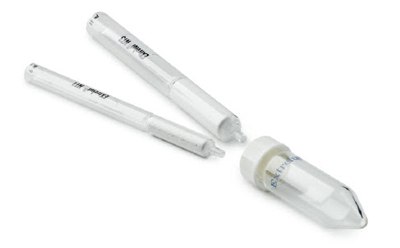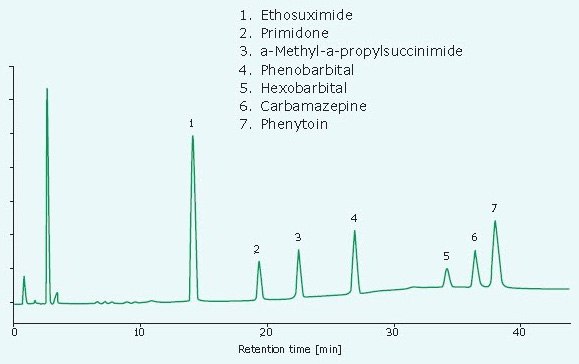Replace Classical Liquid-Liquid Extractions with EXtrelut® NT

SLE: Emulsion-Free Supported-Liquid Extractions
Classical liquid-liquid extraction (LLE) using a separation funnel is often associated with certain disadvantages: formation of emulsion, poor phase separation, high solvent consumption, low degree of automation and high personnel costs. EXtrelut® NT simplifies liquid-liquid extraction by replacing separation funnels. Using a single step is more efficient and provides solvent, material, and time savings in comparison to classical funnel separation.
EXtrelut® NT Pre-packed Column
EXtrelut® NT Packing Material
EXtrelut® NT Accessories
Benefits of Extrelut® NT over LLE
- Minimal solvent usage
- Simple method
- Higher sample capacity and throughput
- Emulsion free extracts
- Higher purity, suitable for trace analysis
EXtrelut® NT SLE sorbent is extremely versatile and can be used for biological samples, water analysis, food and beverage, and environmental applications. Any LLE of aqueous samples can be easily replaced with Extrelut® NT supported liquid extraction.
With its easy-to-use working principle a higher recovery and cleaner extraction can be achieved. The aqueous sample is simply applied to the LLE of aqueous samples. It distributes itself in the form of a thin film over the chemically inert matrix and thus acts as a stationary phase.
Subsequently, elution takes place using organic solvents that are non miscible with water, solvents like e.g. diethyl ether, ethyl acetate or halogenated hydrocarbons. All the lipophilic substances are extracted from the aqueous into the organic phase. During this process the aqueous phase remains on the stationary phase. The eluate is free from emulsions and can be evaporated for further analysis.
The capacity of EXtrelut® NT pre-packed columns for aqueous samples are specified by the designation.
Significantly smaller samples must be appropriately diluted. If larger volumes are applied, the columns are overloaded; water breaks through into the solvent.
Elution is carried out with 2-3 times the sample volume. The liquid may simply be allowed to run through the column by gravity. The column outlet cannula regulates the solvent flow appropriately.
- In order to prevent water breaking through the sample, don’t overload the column.
- Shorter waiting times can affect the recoveries adversely.
- The recommended sample volumes must be adhered to. Solutions of smaller volumes must be diluted to give indicated volumes.
Application: HILIC Separation of Antiepileptic Drugs (AEDs) in Serum after Extrelut® NT SLE
EXtrelut® NT has been used for quite some time within research, for the sample preparation of urine, whole blood, plasma, serum, gastric juice, liquor, amniotic fluid, feces, animal and plant tissue. Other applications are in the areas of environmental and residue analysis, e.g. the analysis of industrial, domestic and waste water. The fractionated elution of acidic and basic substances (e.g. drugs and their metabolites) from body fluids is also possible.
| HPLC: | LaChrom® system | ||
| column: | LiChrospher® RP-select B (5 µm) LiChroCART® 250-4 | ||
| mobile phase: | A: Water LiChrosolv® Acetonitrile LiChrosolv® (1+1) B: Water LiChrosolv® |
||
| gradient: | Time [min] | % A | % B |
| 0 | 10 | 90 | |
| 30 | 60 | 40 | |
| 44 | 60 | 40 | |
| 44.1 | 100 | 0 | |
| 50 | 100 | 0 | |
| 51 | 10 | 90 | |
| 75 | 10 | 90 | |
| flow: | 1 mL/min | ||
| temperature: | 30 °C | ||
| detection: | UV 205 nm | ||

Figure 1. HILIC separation of antiepileptic drugs (AEDs) in serum after Extrelut® NT SLE.
Determination of Antiepileptic Drugs (AEDs) in Serum
如要继续阅读,请登录或创建帐户。
暂无帐户?